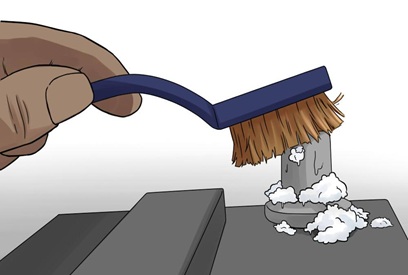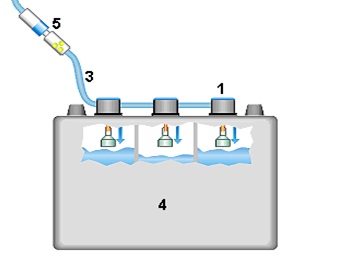Proper battery maintenance will increase the life of the battery. As the deep cycle batteries are very expensive, with the proper care and measures, you can bring out a good output out of them for a longer time. We often look over a few measures that are actually needed to be taken care of. For example, checking the water levels in the battery or not providing the battery an exact charger it needed. Loose cables, spillages, corrosion what not! The precautions you need to take while restoring or using a battery are larger in number. Here, we are providing you with them. We have taken care of introducing you almost every precaution you need to take while dealing with the battery.
Common Precautions:
- Make sure you wear all the protection wear. Before going through the process, wear gloves, protection glasses and rough clothes THROUGHOUT THE PROCESS as you are dealing with an acid material which can burn your skin and damage your organs.
- Don’t use tap water which may contain salts that are harmful to mix up with either the acid mixture or for electrolyte purposes.
- Deep cycle dead batteries contain acids and gases that are flammable. Make sure that there us no fire or explosive substances while reconditioning the battery.
- Never discharge below 10.5 volts.
For Keen Self Observation:
- Examine the outer surface area of the battery carefully, completely. The top of the batteries and terminal connections should be clean, dry, and free of corrosion. With the baking powder and water solution, you can clean the surface of the battery. To clean the terminals, you need to use the brush and should handle the terminals gently.
- In case of Deep Cycle Wet Battery, Keep checking the top surface of the battery. If you find any fluids flowing on the top of a wet battery, it may mean that the deep cycle wet battery is being over-watered or overcharged. For that you need to have a good watering plan.
Note that, Only deep cycle wet/flooded batteries can be watered. YOU SHOULD NOT WATER THE AGM/GEL deep cycle batteries.
- In case of Deep Cycle GEL /AGM battery, If you find any fluid on its surface, it may mean that the battery is being overcharged. It can decrease the battery performance and lifetime of it.
- Keep on checking the battery cables and connections often. If you find any fault, change the cables and tighten any loose connections. Make sure not to overtighten the terminals. Else, it may result in a post breakage, post meltdown, or fire.
- Use an insulated wrench while dealing with the clamps. Initially, they may get surrounded with any electrolyte spill that may cause burns.
Watering precautions:
- Only deep cycle wet/flooded batteries can be watered. YOU SHOULD NOT WATER THE AGM/GEL deep cycle batteries.
- Flooded/wet batteries need to be watered from time to time (for every few weeks). The frequency of watering depends on battery usage, charging and operating temperature.
- You should use distilled water to fill the cells. Why distilled water? Because the undistilled water contains hydrogen and oxygen and if it remains in the battery later, it may cause the sparks or explosions. Hard water can contain contaminants like sulphates, chlorides etc that will damage the battery. Make sure that the containers you use are debris and dirt free.
- In case of low electrolyte level, add just enough distilled or deionized water to cover the plates and then charge the batteries. Never let the water overflow out of the cells.
- While checking the electrolyte levels, place the vent caps you have removed upside down or flip it, so that dirt does not accumulate on the underside of the cap.
- In warm or hot conditions, you should water the battery more often. Check the electrolyte levels and add distilled water, if required. Never add electrolyte to a battery that is not fully charged. Just add distilled water and do not overfill. The plates must be covered at all times.
Precautions you need to take while cleaning:
- For flooded batteries, check whether all the vent caps are secured properly on the battery or not.
- Make sure to clean the top of the battery, terminals, and connections with a dry cloth or non-metallic brush, with the baking soda solution (1 cup of baking soda to 1 gallon of water). Do not allow the cleaning solution to get inside the battery.
- Rinse with water and dry with a clean cloth.
- Apply a thin coat of petroleum gel or protector spray after cleaning the clamps.
- Keep the area around batteries clean and dry.
For the storage of batteries:
- Physically inspect for damaged cases, remove any corrosion, and clean and dry the battery tops.
- Fully recharge the batteries.
- Check the electrolyte levels and add distilled water as required, but avoid overfilling.
- Store in a cold dry place, but not below 0° Centigrade.
- Never discharge below 10.5 volts.
These are the minimum precautions needed to increase the durability of the battery. The good the precautions you take, the better the battery will be.












